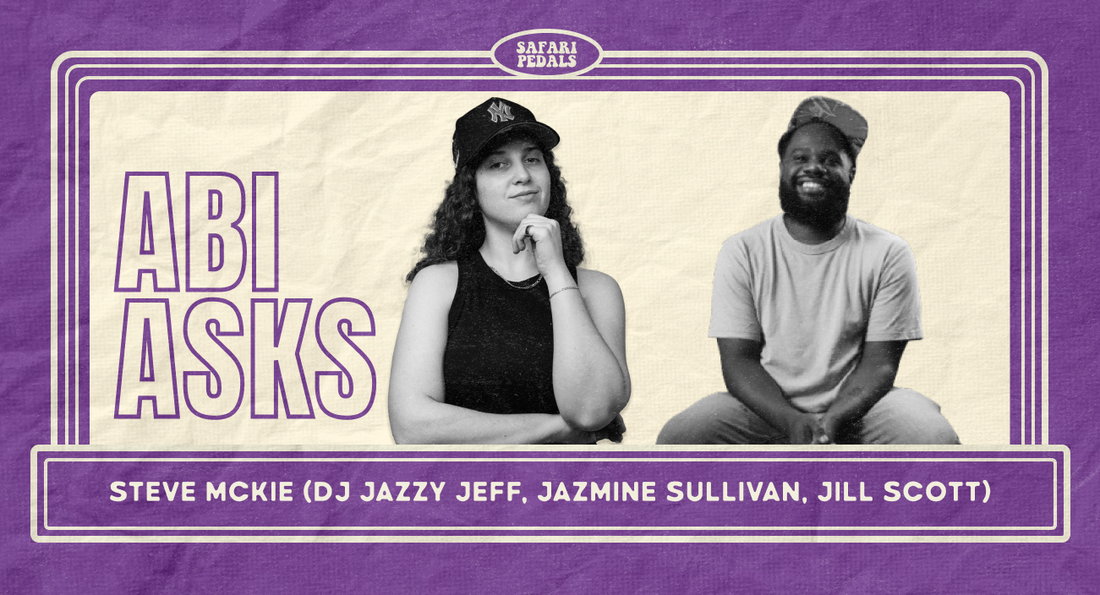
The Art of Recording Drums: Insights from a Grammy-Nominated Producer
Abigail abi@safaripedals.comHey y’all!
Lately, I’ve been on a drum-recording CRUSADE. I’ve been deep-diving into records with drum sounds I really love, like: “My Friends Over You” by New Found Glory
“My Friends Over You” by New Found Glory  “Carry On Wayward Son” by Kansas
“Carry On Wayward Son” by Kansas
I’ve been pulling little nuggets of inspiration from those sounds to shape my own producer workflow, Focusing on how the drums are recorded and mixed. How does the snare sound? At what volumes do each of the drums sit? What’s the emotional intent and story behind it all? This drum crusade got me thinking it’d be awesome to dive deeper into this topic for this week’s blog.
On that note, I had a blast chatting with Grammy-nominated producer and drummer Steve McKie to get his take. I asked him:
"You're both a drummer and a producer- how do you approach recording drums? What's your process for dialing in a great drum sound, from setup and tracking to processing?"
Steve's Approach
He said: “For me, it starts with feel—making sure the drums are sounding sweet before I even hit record. I always tune the kit myself so it sounds right in the room. From there, I run everything through warm preamps—Neves, APIs, Chandlers—whatever adds the color I need. I usually throw in a pair of ribbon mics for tonal contrast, just to bring a different texture into the mix. Once that’s locked in, I focus on balance—getting every channel to sit just right while keeping the soul of the performance intact. Whether I’m behind the drums or the board, it’s about making the sound feel alive.”
I really loved reading Steve’s answer, and it got me thinking about a few different things.
The Importance of Drum Tuning
As producers (and engineers too- I see y’all!), it’s SOOOOO easy to get obsessed with gear: Mics, preamps, and all the fun-looking boxes with knobs and glowing VU meters. But something as basic as drum tuning—which can make a huge difference in how the kit feels and how the room sound feeds into the overall drum mix—can so easily get overlooked. So this was a HUGE note to self for me.
How Preamps Shape Drum Sound
This was a great reminder for me to start shifting into “how do drums react to different preamps” mode. I’ve got way more experience recording guitars and bass than I do drums, so this was a good nudge to keep dialing in my drum preamp game and just get more experience in general- so I can really develop both taste and a more educated workflow.
Mixing for Feel and Emotion
Honestly, this is the kind of topic I would totally blab about if we were chatting in person. It’s what I call the “Emotion Over All” principle that guides my work as a producer. I’m always chasing the most emotional performance and mix- not necessarily the cleanest or most “pro-sounding.” Because sometimes, what’s best emotionally for the song isn’t the most polished take… but then again, maybe it is!
That’s why I really loved how Steve wrapped up his answer by putting the spotlight on feel- mixing the drum performance to keep soul and emotion intact. Plus, he mentioned using ribbon mics for tonal contrast, which adds that extra layer of vibe. Honestly, I love that all “roads” in his approach lead right here- straight to the heart of what makes a drum performance truly feel alive and tells the emotional story.
Thank you so much Steve for your awesome answer!
Catch y’all next blog!
